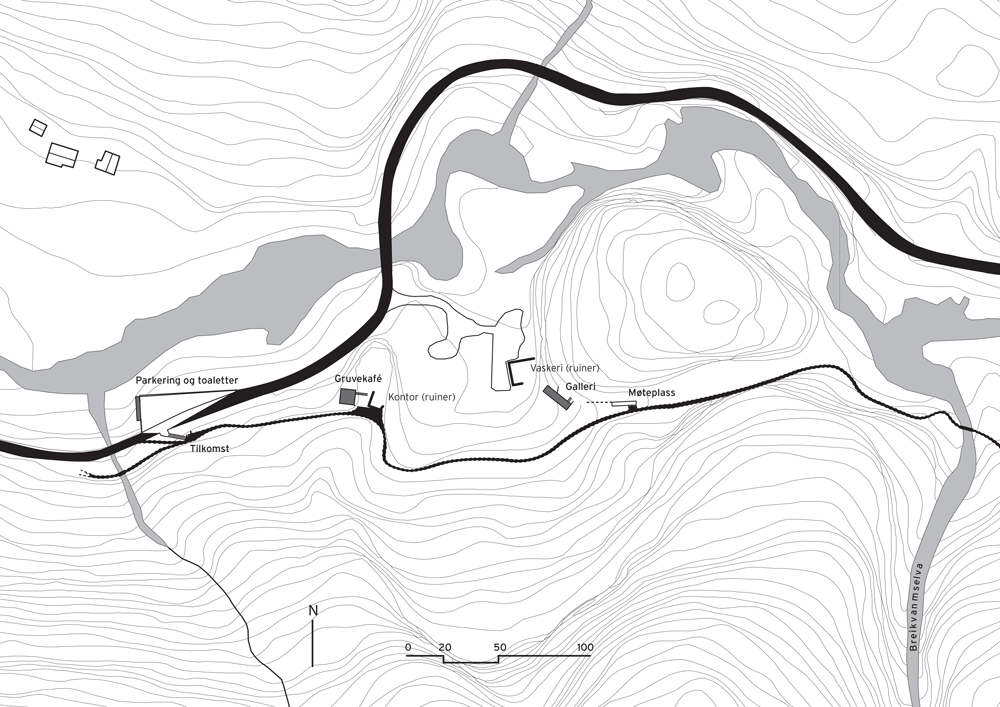Peter Zumthor creates buildings on stilts for tourist trail at a Norwegian mine
Swiss architect Peter Zumthor has built visitor facilities at a historic mine in Norway, with one structure that hangs off a wall and two that are raised on stilts over a steep cliffside (+ slideshow).
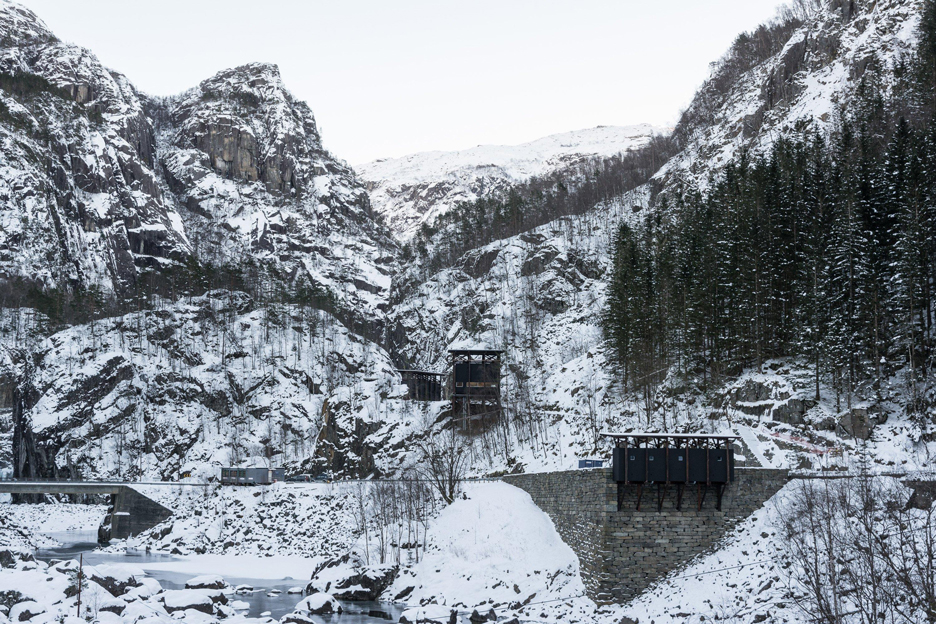
Zumthor has created three buildings at the old Allmannajuvet zinc mines in Sauda, which were in use for just 18 years at the end of the 19th century.
They include a cafe, a service building and a museum dedicated to mining history.
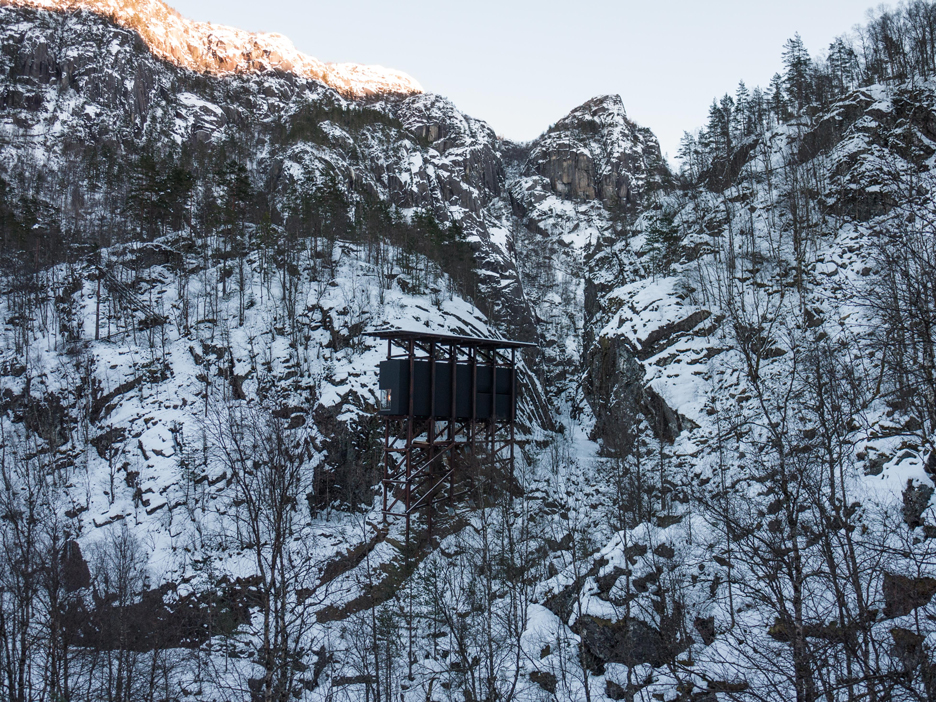
The cafe and museum are raised up over the craggy landscape on a grid of timber supports, while the service building – containing toilets and parking facilities – is perched on the side of a stone wall.
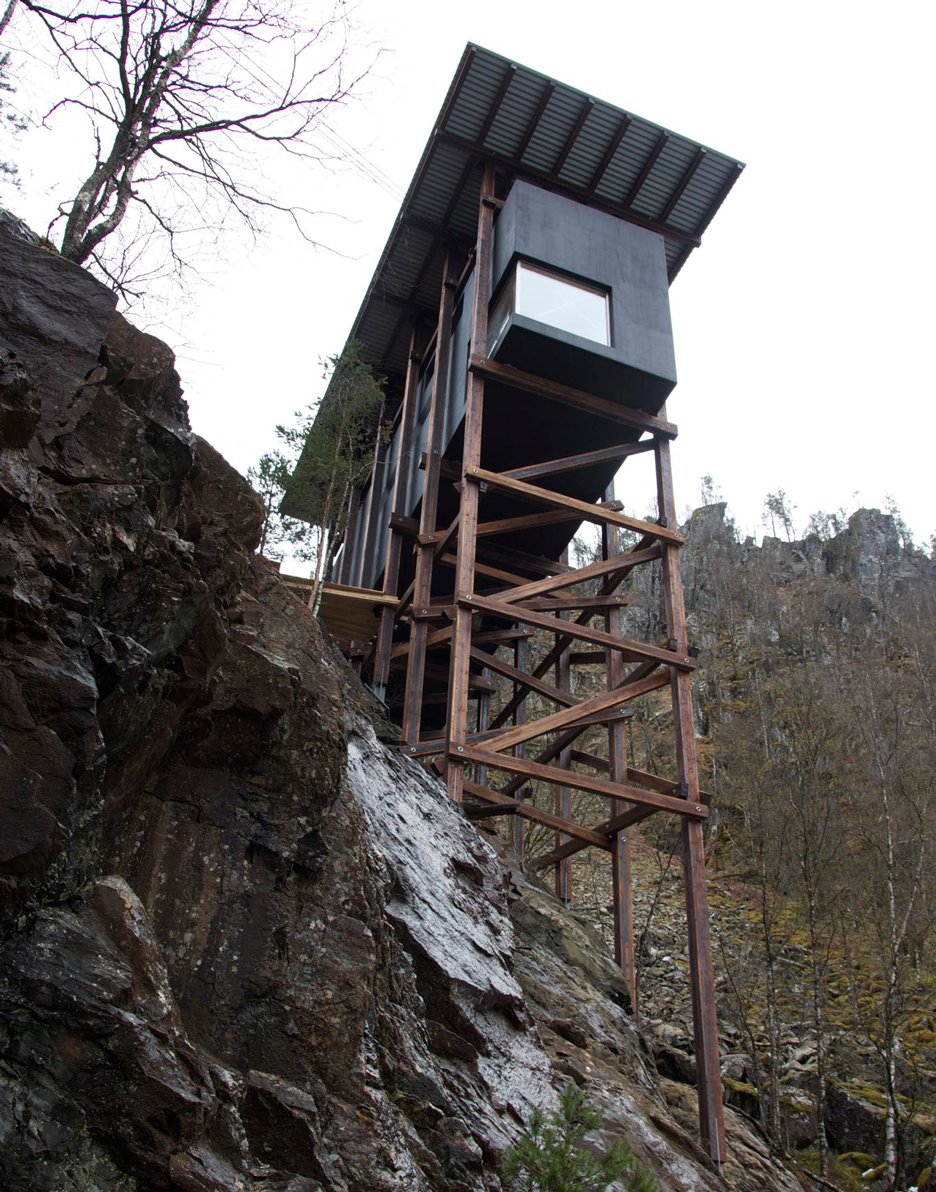
All of these structures are made up of three main elements: a simple black box, an encasing support structure made from wood, and a corrugated zinc roof canopy.
A fourth building was also constructed as part of the complex, in a slightly different style to the other three. It marks the entrance into the mine for tourists.
The complex officially open to the public in September 2016.
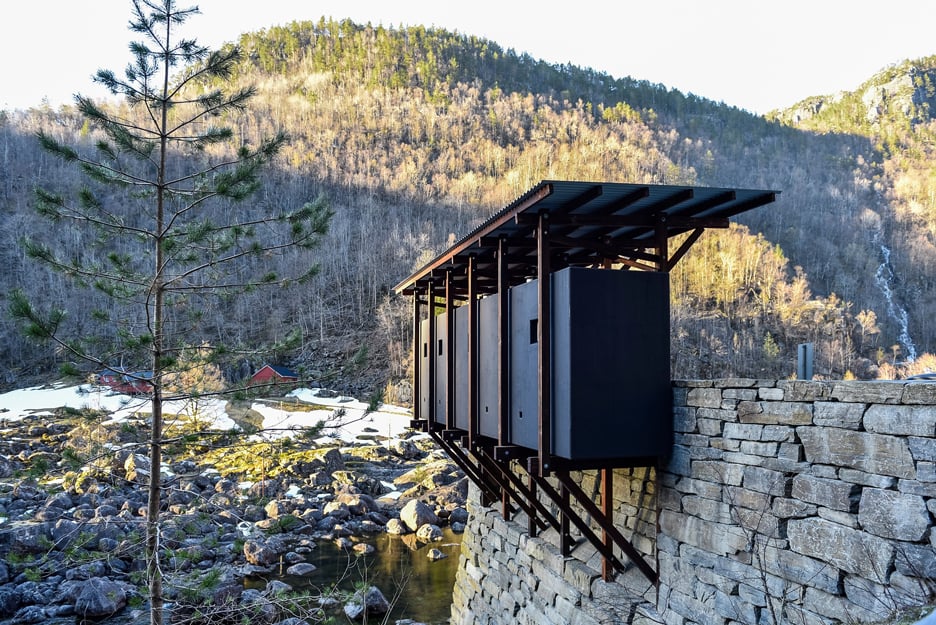
The Allmannajuvet mines were in operation from 1882 to 1898, during which time they produced over 12,000 tonnes of zinc ore.
The changing price of zinc forced them to close, as this form of extraction become less financially viable.
Zumthor wanted his buildings to reference "the drudgery" of the mining operation, and the "strenuous everyday lives" of the workers. Each one offers a different perspective of the remote landscape.
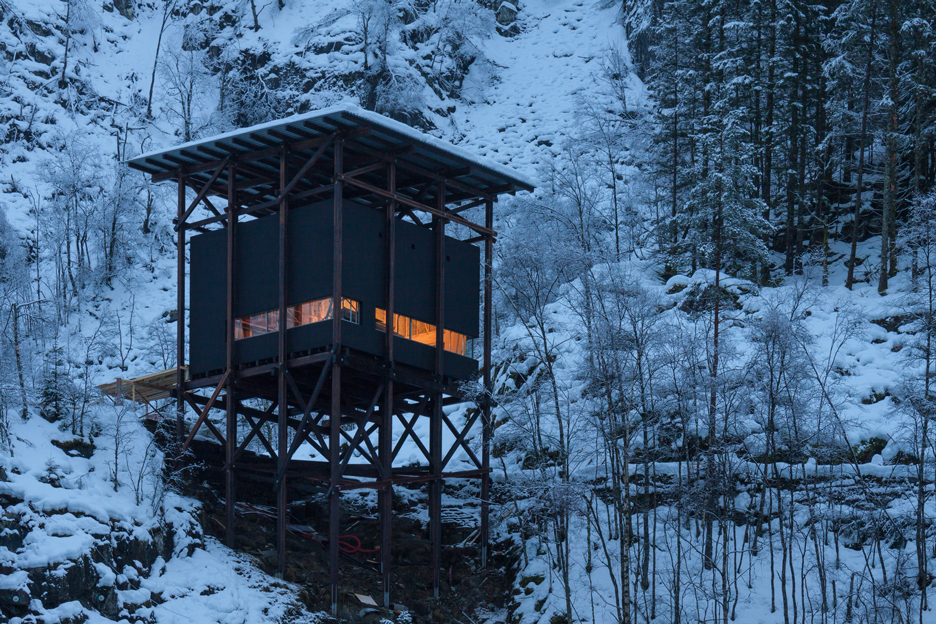
The Allmannajuvet gorge forms part of the Ryfylke National Tourist Route, one of 18 designated tourist trails that wind through the fjords, islands, cliffs and boulder fields of Norway's wildest landscapes.

Spanning 183 kilometres, the Ryfylke route extends from just outside Stavenger to the village of Røldal.
It also includes a Corten steel bridge by Rintala Eggertsson Architects and a ferry terminal by Jensen & Skodvin Arkitektkontor.
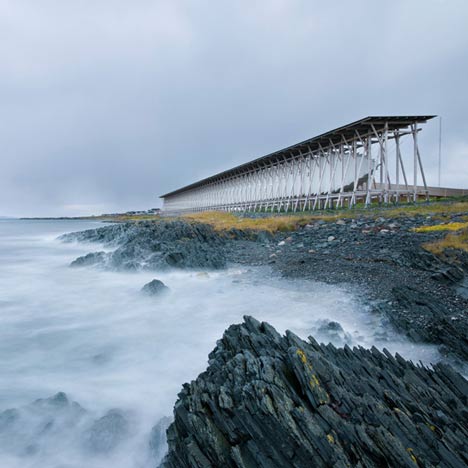
This isn't the first project Zumthor has worked on for the National Tourist Routes.
A few years ago, he worked with artist Louise Bourgeois to create the Steilneset Memorial, commemorating suspected witches who were burned at the stake.
Other architects who have contributed to the routes include Todd Saunders and Reiulf Ramstad Architects, who both created vertiginous viewing platforms, and Snøhetta, whose projects include a roadside rest stop and a sinuous hotel.
